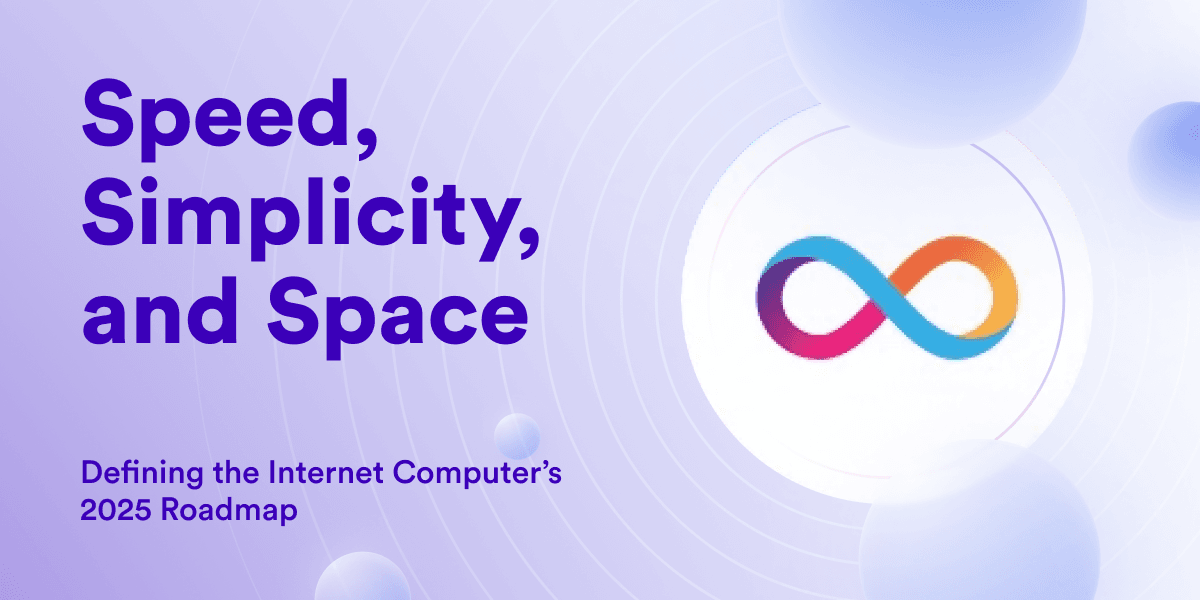
How we use and trust the internet is evolving fast, as we know it. The DFINITY Foundation is championing this change by building the World Computer, a decentralized platform designed to redefine how applications are created, hosted, and experienced worldwide.
This vision was the focus of the latest episode of the World Computer Tech Talk on YouTube, where Tracy Trachsler, Head of Institutional Relations, sat down with Jan Camenisch, CTO of DFINITY, and Manu Drijvers, Senior Director of Engineering, for a deep dive into the protocol’s latest advancements.
The episode introduced the Tokamak, Beryllium, and Stellarator milestones through an engaging discussion centred around three core themes—speed, simplicity, and space. Together, they represent a significant leap forward in the Internet Computer Protocol (ICP)’s mission to build the most powerful, decentralized blockchain infrastructure on the planet.
Understanding the World Computer Vision
To begin, Trachsler prompted the discussion with a grounding question: What does it mean to build the World Computer?
Camenisch explained that the goal is to create a truly decentralized cloud, enabling developers to build scalable web applications and internet services entirely on-chain. Unlike traditional blockchains that require integration with centralized cloud platforms for storage or front-end hosting, the Internet Computer uniquely allows developers to deploy full-stack applications without relying on intermediaries.
This comprehensive approach is not just about decentralization for its own sake, it’s about reclaiming the internet and placing ownership in the hands of developers, creators, and users.
“With ICP, everything from computation to data storage is handled natively on the protocol,” Camenisch noted. “This is what sets it apart from typical smart contract platforms.”
The Architecture That Powers the Vision
When asked how the ICP architecture supports this mission, Drijvers emphasised the role of canisters, a form of smart contract unique to the Internet Computer.
Canisters are autonomous, upgradeable software units that encapsulate both logic and data. Unlike contracts on other chains, canisters on ICP can handle high-throughput web requests, run complex computations, and store large volumes of data, all at internet speed.
This means developers can build dapps that behave like traditional SaaS platforms, yet are governed by the community and deployed on-chain, free from centralized gatekeepers.
The Roadmap as an Engineering Blueprint
The next portion of the discussion focused on the recently published technical roadmap, which is more than just a list of features; it’s a blueprint for how DFINITY engineers structure their development efforts to meet the World Computer goals.
Trachsler noted how each milestone is named after scientific innovations or elements, reflecting the protocol’s commitment to building something with deep engineering roots.
“It’s not just about building fast or building first, it’s about building the right things, in the right order, with long-term sustainability in mind,” said Drijvers.
Milestone Highlights: Speed, Simplicity, and Space
1. Tokamak – Speed
The Tokamak milestone targets one of the most pressing issues in blockchain: execution speed.
With improvements that reduce block time and increase message throughput, ICP developers can now create real-time applications that don’t feel delayed or clunky. This is a major win for sectors like DeFi, social networking, and interactive games, where users expect seamless, responsive interfaces.
These enhancements also reinforce ICP’s advantage over traditional blockchains, which often face trade-offs between decentralization, scalability, and speed.
“The Tokamak milestone is really about making the user experience indistinguishable from what you’d get with Web2,” Camenisch explained.
2. Stellarator – Space
The Stellarator milestone addresses another pain point in blockchain: data storage.
Where most blockchains offload data to external networks like IPFS or Arweave, ICP now provides vastly expanded on-chain storage, empowering developers to store images, videos, and logs directly within canisters, without breaking the bank or compromising decentralization.
Drijvers highlighted that Stellarator unlocks new use cases (like fully on-chain media apps and archiving tools) and ensures data persistence, transparency, and ownership.
“You can now build applications where even the storage layer is on-chain. This isn’t possible on most other blockchains,” he said.
3. Beryllium – Simplicity
Simplicity is often overlooked in technical innovation, but Beryllium tackles it head-on.
This milestone enhances the developer experience, introducing better canister diagnostics, logging tools, and analytics. These upgrades reduce the time developers spend debugging, monitoring, and managing applications, especially critical for teams new to blockchain or transitioning from Web2.
By improving reporting and simplifying the interface with the protocol, Beryllium makes development on ICP more intuitive and efficient, accelerating onboarding and deployment cycles.
“We want to make it as easy as possible for developers to build confidently on ICP,” Trachsler said. “Beryllium is a key step in that direction.”
Quantifying R&D: Measurable Innovation
When asked how this R&D effort can be measured, Camenisch noted that milestones like Tokamak, Stellarator, and Beryllium are quantifiable in performance metrics, from faster transaction finality to greater data capacity and lower developer churn.
The DFINITY engineering team tracks output by user impact: How much faster is the network? How much easier is it to develop on? How much more can users and applications store natively?
This feedback loop ensures that every technical milestone brings real-world benefits to developers and users, not just theoretical breakthroughs.
Conclusion
DFINITY is paving the way for a faster, smarter, and more scalable decentralized internet. With more upcoming features like native Bitcoin and Ethereum integrations, AI-powered canisters, and decentralized identity, the Internet Computer is redefining what's possible. Backed by key milestones like Tokamak, Stellarator, and Beryllium, it’s not just evolving, it’s becoming the gold standard for next-gen blockchain infrastructure.
Article By: Mana Lamja